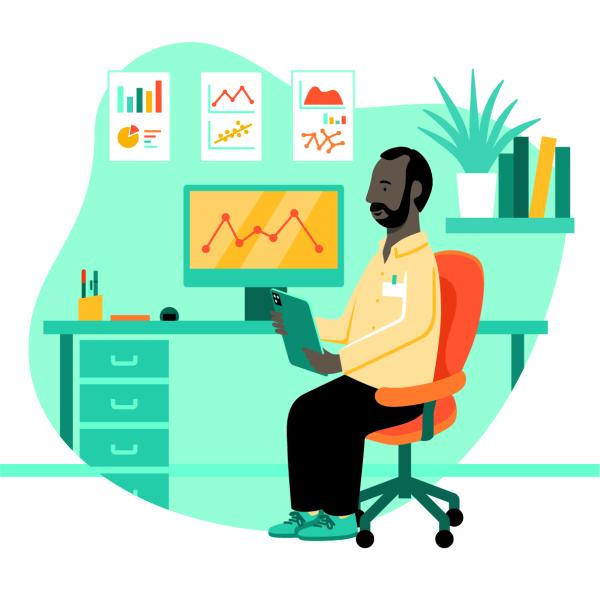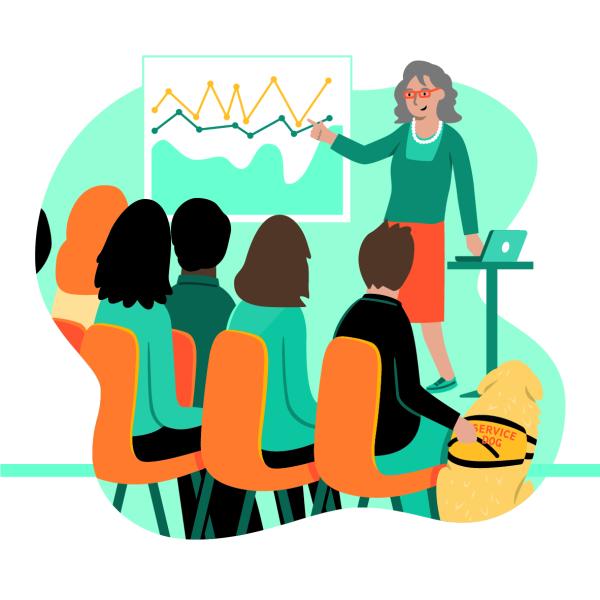The CSP's Physiotherapy Health Informatics Strategy (PHIS) will affect the profession on an individual, organisational and national level. Here we set out our vision for the five-year plan.
What is covered in the publication?
There are many areas of health informatics where the physiotherapy profession can lead change, drive improvement and demonstrate impact.

The vision is split in to the same three levels as the strategy's aims:
- individual
- organisational
- national
There are also some core elements that will work across all of these levels.
However, no matter what your role or responsibilities are, you can have a positive impact at any of these three levels. Whenever progress is made and maintained it will grow and develop informatics culture across the physiotherapy profession. At all levels there are a number of domains giving more options for imbedding informatics in physiotherapy.
Individual
All members of the physiotherapy profession can take action to optimise the use of informatics whatever role they occupy. This may be through the better collection and use of meaningful data, and through the safe and efficient sharing of data. It may be through supporting small cycles of change or improvement in services. It may be through the personalisation of services to suit those involved.
Organisational
Members of the profession can use informatics to have an impact at an organisation level. This may look like working with multi-disciplinary colleagues to improve the infrastructure (devices, systems, apps, connectivity etc.) required to deliver efficient services and getting access to the finance to make this infrastructure available. It may be in supporting best practice in governance, including data sharing. It may be through empowering the workforce to have the skillset to use technology in practice, or to work with others to activate change and innovating new ways of working or finding solutions to challenges.
National
Members of the profession can influence national agenda, policy and guidelines on the use of health informatics. This may be through working with national leadership teams to influence the inclusion of informatics as a priority for health and social care inside and outside of the physiotherapy profession. It may be through exploring the options for inclusion of informatics as part of the career-long learning for those in the profession, including the exploration of career pathways in informatics. It may also be through contributions to the informatics evidence base through research at a local, regional, national and/or international level.

Core elements
Regardless of position or influence, all members of the profession have a leadership role. This may be through advocating use of informatics in a service, through driving organisational change or through influencing national policy.
Education is another core element of the PHIS. This may be through comparing oneself against the UK AHP Digital Competency Framework and setting learning objectives as part of CPD, through delivery of education modules as part of organisation or EHI-based learning, or through setting of education standards.
All members of the profession have a responsibility to use informatics to address health inequities. When used well, informatics can support inclusion but when used inappropriately, it can actively exclude people from services. Increased knowledge, informed changes to service delivery and/or co-production with service users can help position informatics as a tool to address health inequities.
As CSP England policy lead Natasha Owusu explains:
We need to know who is and – crucially – who isn’t accessing services... The PHIS will provide an excellent resource that all CSP members can use to strengthen their confidence to collect and use data to make a difference.
Informatics culture
Progress in any domain, at any level, will contribute to the culture of embracing informatics in the physiotherapy profession. An informatics-enabled culture will support incremental and exponential changes, with further progress reinforcing this culture, offering an enhanced environment for future development. This process may be led by informatics specialists but needs to be supported by all members of the profession.